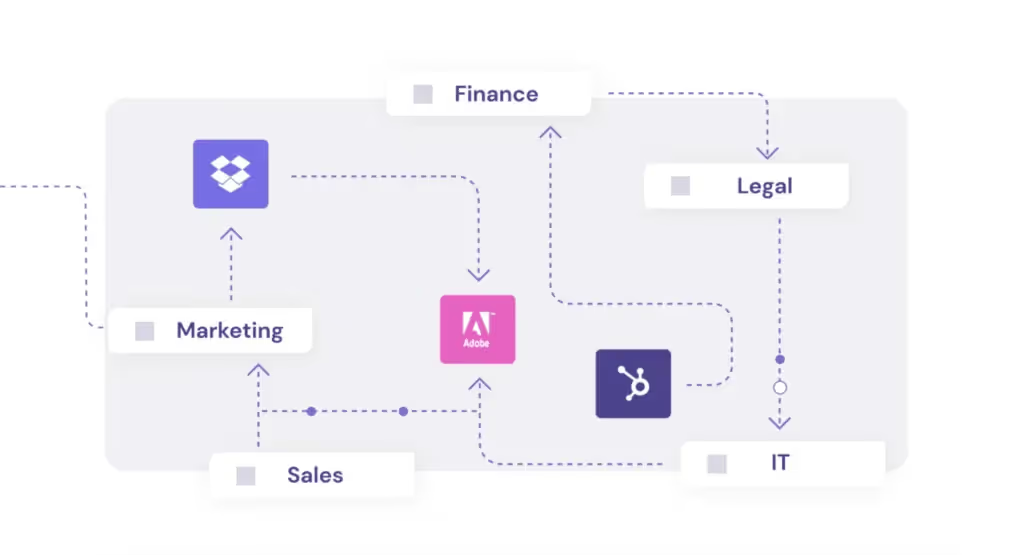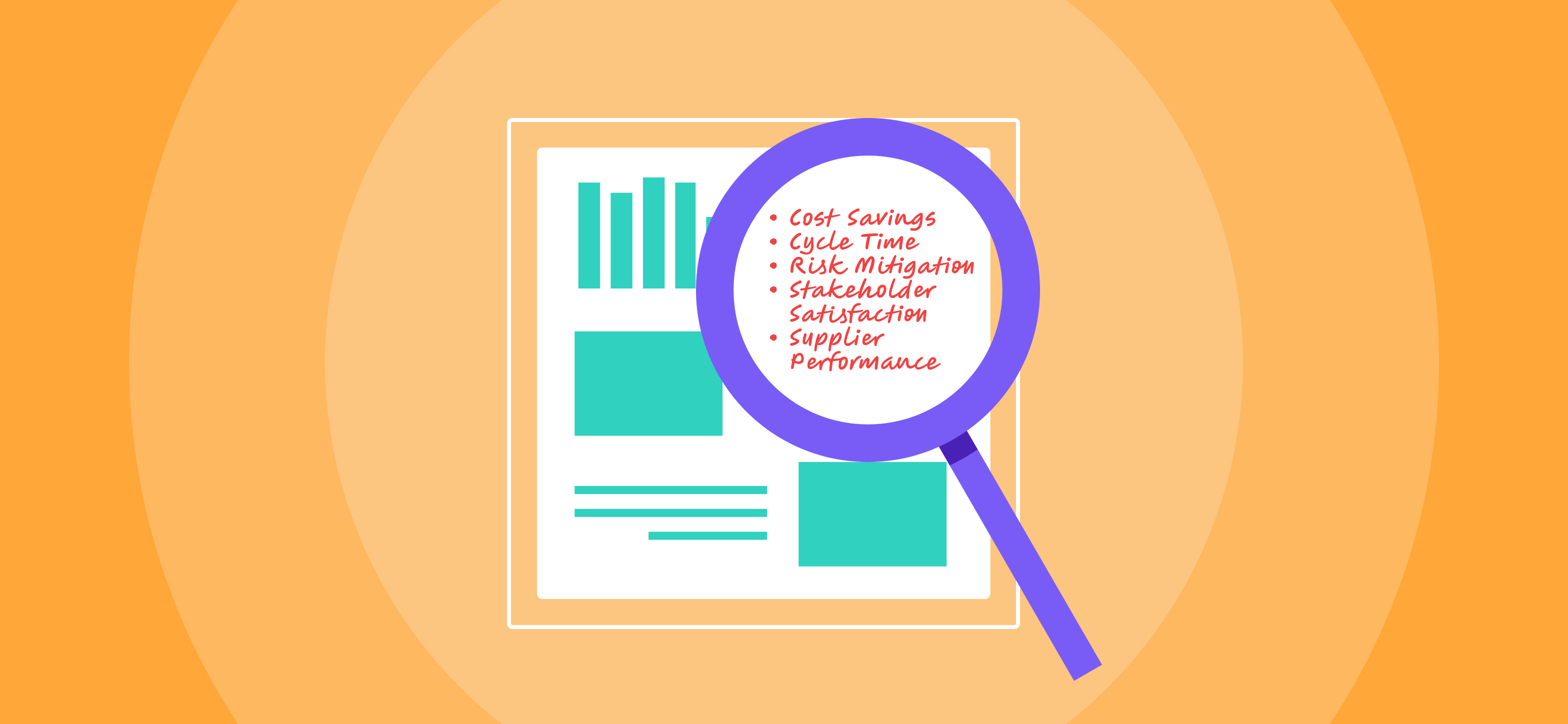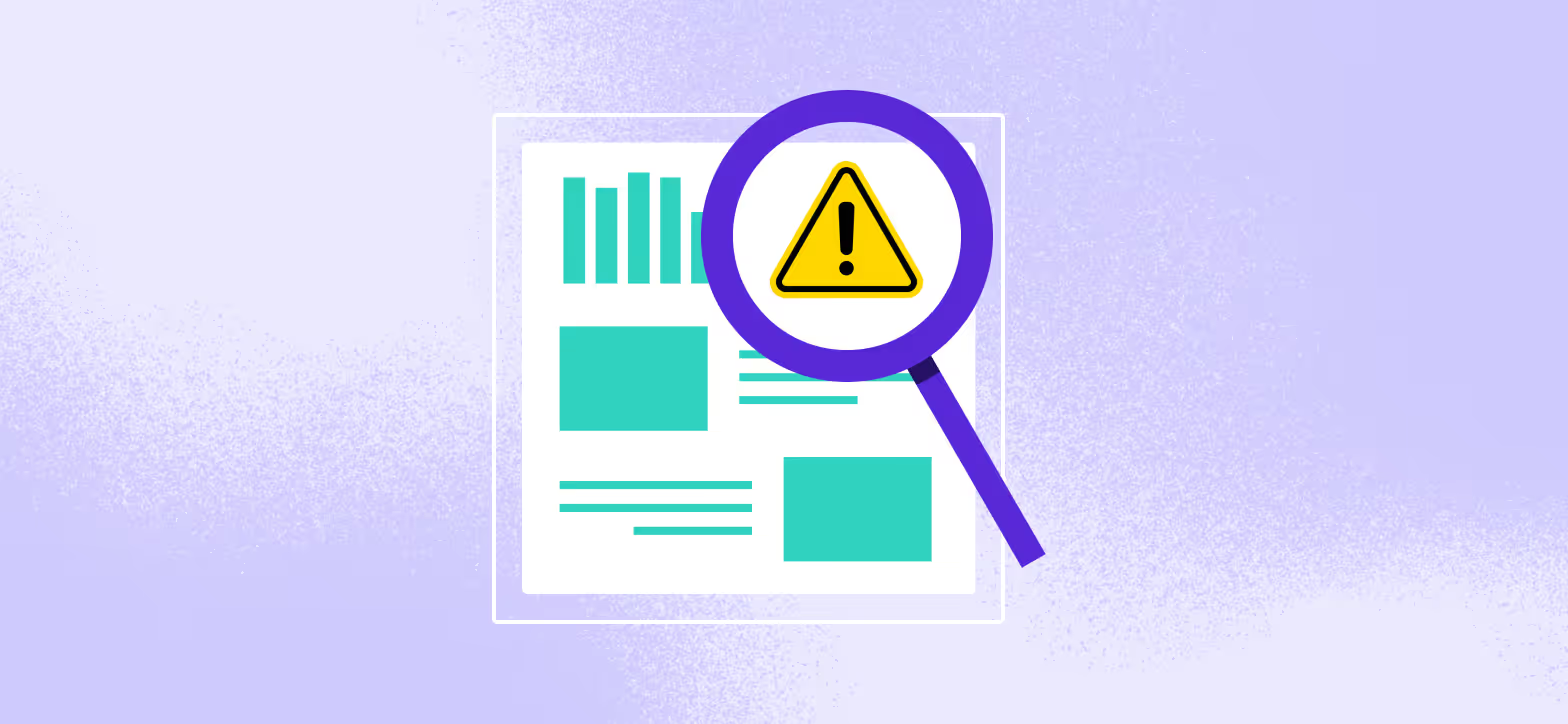SaaS vendor management encompasses the strategy and processes your business uses to evaluate, select, onboard, manage, and report on SaaS vendor relationships throughout their entire lifecycle.
Effective SaaS vendor management is all about understanding business needs and problems across each functional area, finding the best software to address them, and procuring them with as little risk and excess cost as possible.
The Importance of SaaS Vendor Management
After working with hundreds of companies to manage vendors and SaaS spend, our team at Tropic found that most companies overpay for software by as much as 30%. We’ve also found the average end user spends 4-12 hours of all-in work per contract. Considering the average company has about 300 contracts, that means senior-level employees are spending 1,200 to 3,600 hours annually just on contract management.
And that’s just when you get to the contract stage of the process. It doesn’t include the time to find, compare, and evaluate solutions. One of the biggest reasons why SaaS products are so difficult to buy is that in many categories, there are several comparable vendors. They don’t always have easily available and transparent pricing, so buyers can end up attending several demo calls just to get an estimate. Getting a clear picture of features, workflows, and prices can take weeks.
This is wasteful for a company of any size, but small businesses and startups have more to lose. Time spent on vendor evaluations takes away from the bottom line and divert employee efforts away from their core competencies.
What is the Goal of SaaS Vendor Management?
The ultimate goal of SaaS vendor management is to achieve what McKinsey calls “software procurement excellence.” In a 2022 study that included 150 global companies, researchers at McKinsey found that indirect procurement optimization can reduce overall costs by 15-17%.
Essentially, procurement success is about solving business needs with software as completely as possible while minimizing risk, direct and indirect costs, and time.
Being able to drive these kinds of results turns vendor management from a backroom process to a seat at the table when strategic decisions are being made. Driving software procurement excellence arms everyone in an organization with the data and expertise they need to buy software quickly and confidently.
Who Typically Handles Vendor Management?
In enterprises and larger businesses (over 1,000 employees), there’s typically a dedicated procurement team that focuses on evaluating and managing various vendors. This takes the burden of finding, vetting, and onboarding vendors off individual managers, directors, and even executives so they can focus on their roles.
This isn’t to say that enterprises don’t run into some of the same challenges as startups when managing vendors. They do. But they’re much better equipped to mitigate the effects of those challenges.
In small businesses and startups, there’s generally no dedicated procurement team. Instead, the software purchasing process is left to be managed by a combination of finance, IT, legal, and functional area leads.
As we’ll discuss next, this patchwork “procurement” team structure can lead to software sprawl, higher risk, wasted spend, and lost productivity.
Common SaaS Vendor Management Challenges
No Clear Owner
In organizations with fewer than 1,000 employees, it’s rare to find a dedicated procurement team that can handle the hard parts of vendor management.
Ultimately, many vendor relationships are left with no clear owner responsible for every part of the vendor management process. For example, the team that handled vendor selection may not have insights into price negotiation, onboarding, or risk management. Iit’s difficult for functional area managers to balance evaluating new software on top of their day-to-day responsibilities.
High Amounts of ‘Shelfware’
Even in a world where SaaS reigns supreme, many companies still have lots of shelfware (software that’s purchased and then never used) in the form of SaaS subscriptions that rarely, if ever, get used. A 2020 study from Gartner revealed that the majority of companies have over 25% of their software going unused.
That’s a major driver of unnecessary costs that comes down to a lack of visibility into what software has been purchased and the extent to which your employees are using it.
Hidden Compliance Risk
As ubiquitous as SaaS is, not all solutions are created equal when it comes to data security, privacy, and industry-specific compliance.
ISACA, an international professional association focused on IT governance, listed some key SaaS security risks that can lead to financial, legal, and reputational penalties if not addressed, such as:
- Data loss.
- Unauthorized access.
- Poor API security.
- Risk mitigation.
Too Many Options
SaaS is the dominant model for software purchases today. In almost every industry, there’s a proliferation of tools that serve similar purposes and have almost identical features and pricing.
This can make researching difficult because you’re essentially looking at minor differences in functionality between tools. It’s difficult to know which one is truly the best for your specific needs.
Redundant Tools
The rise of self-serve SaaS has made it easier than ever for users to adopt solutions quickly. The problem is that even in small organizations, people buy tools without first knowing if another coworker or team has already brought in something similar.
This can lead to multiple subscriptions of tools that offer overlapping functionality. Instead of consolidation, you’re paying for sprawl.

Benefits of Good SaaS Vendor Management
Reduce Software Costs
SaaS is dynamic. Software prices, the number of seats you need, new features – all of these can change dramatically, even within the same category of tools. It’s not easy to determine if you’re getting a fair price. At Tropic, we’ve found that most companies are overpaying for software by at least 30%. In some extreme cases, companies are paying 80% over what they should.
How? By paying for licenses or functionality that’s going unused, or simply not having the benchmarks they need to negotiate effectively.
Good SaaS vendor management will allow you to find situations where you’re overpaying and negotiate down to a fair price. In a time when everyone is being asked to cut costs, this is vital.
Save Time
We’ve observed that companies spend four to 12 hours on a single contract.
At an average of 300 contracts per company, that means senior-level employees are spending 1,200 to 3,600 hours annually hunting down documents, working with legal, or preparing for negotiations instead of on the value-added work they were hired to do.
Of course, that doesn’t take into account the time it takes just to get a shortlist of vendors. The deluge of options for SaaS makes researching and comparing solutions a full-time job in itself.
Offloading your vendor management to a reliable third-party can free up that time, and restore peace of mind to your most valuable employees by taking on the legwork of evaluation and negotiation.
Get More Visibility Into Your Software Stack
For every SaaS solution you own, you should be able to quickly identify who bought it, why they bought it, and what the terms of the contract are.
Strong SaaS vendor management practices will give you more visibility and help you identify unused or redundant tools. No need to pay for both Calendly and SavvyCal or Teams and Slack.
Forecast Future Costs More Accurately
Inflation isn’t only impacting consumers. Data from Capiche shows that software prices have increased 62% over the past decade. That’s faster than the inflation rate.
Software costs are quickly becoming one of the largest line items for most businesses. Your SaaS vendor management practices should give you insight not only into what you’re spending now, but what your next few years could look like. This will help you get more accurate pictures of your costs so you can make proactive decisions about where to consolidate or cut if needed.
Best Practices for the SaaS Vendor Management Process
In this section, we’ll walk through the vendor management process and share some best practices for each step.
If this process looks daunting, that’s because SaaS vendor management is daunting. That’s why many organizations are starting to turn to third-party SaaS procurement solutions to handle parts or all of these steps.
1. Understand the Business Need
Vendor management starts by understanding the business needs and objectives that the SaaS solution is intended to address. Lacking a sense of what you’re buying software for in the first place can lead to wasted spend and time.
This step involves consulting with different teams and stakeholders within the organization to understand their requirements and preferences. What processes is the software meant to augment or replace? How are those processes currently being done? Who is leading/engaging in those processes and what are they trying to accomplish?
This is critical because it will help you understand if the software will produce a satisfactory ROI, or if making changes to your existing processes will be sufficient.
2. Research Vendors
Once your needs and requirements are understood, the next step is to research potential vendors with solutions that align with your needs.
Read reviews, compare features and pricing, ask current users about their experiences, and conduct discovery calls with vendors to get a better understanding of their offerings.
In many categories, there’s an abundance of vendors with overlapping options. In this case, it can be easy to pick the one with the most familiar name. While category leaders are usually worth evaluating, be sure to dive deeper into some you may be less familiar with. There may be a better fit for your needs that deserves a place on your shortlist.
3. Develop a Request for Proposal or Trial for Each Vendor
Depending on the solution, you may need to send out RFPs with your requirements to see what each vendor can do to meet them. Be sure to have explicit criteria you need each vendor to meet.
In other cases, you may be able to sign up for a pilot or even a free trial of the SaaS solutions you’re evaluating. This will give you a chance to actually use the software and determine if it’s a fit for your team.
4. Negotiate Contracts and Pricing With the Selected Vendor
Once you’ve selected a vendor from your shortlist, start negotiating contracts and pricing terms. Depending on the investment, this may involve legal and finance teams to ensure the contracts are fair and aligned with the business’s goals.
This part of the process also includes discussions about terms and conditions, service level agreements, additional services, etc.
Negotiations can take several days, if not weeks. This is where you ensure that you’re not overspending or getting less than you need. Without accurate data and benchmarks, it can be difficult to know if you’re getting the best deal possible.
This is where working with a SaaS procurement service can cut down on the complexity of vendor management.
For example, RainFocus turned to Tropic to cut down on the time their teams spent on procurement. Tropic was able to save RainFocus over 500 hours and 25% of their previous software spend by automating approvals and providing a proven procurement process.
5. Onboard the Vendor and Implement the Solution
Once the contracts have been signed, the next step is to provide necessary training and support to users. Coordinate with the vendor to ensure that the implementation process goes smoothly and that users are able to access and use the system as promised.
Schedule time for training and support for anyone using the software so you can be sure your team is getting the most out of it. Poor onboarding is a common cause of wasted spend, as people will resist using tools they don’t understand or feel slows them down.
6. Monitor and Evaluate Vendor Performance
Before you start using a SaaS solution, set some metrics or Key Performance Indicators that will allow you to determine if the solution is serving its purpose.
Internally, look for metrics like adoption rate, time saved, workflows used, etc. Evaluate your vendor on things like support tickets closed, responsiveness to support queries, system uptime, etc.
This is also a good time to survey the users of the software. Ask them about their experience and if they feel they’re better equipped to do their jobs with the solution in place.
7. Renew, Expand, or Terminate the Relationship
The last step in the process is to determine the best course of action once the contract is up or your renewal date is upcoming.
Essentially, you’ll go back to the contract negotiation phase of the vendor management process. Based on your experience, determine if you need to renegotiate pricing or terms with the vendor.
If the vendor has met or exceeded expectations, determine if they have additional services that will allow you to consolidate more of your processes with that vendor. If they’ve fallen below expectations, or change the terms so they’re less favorable, it may be time to evaluate a new vendor.
Tired of going through this entire process with every SaaS vendor? Check out our case studies to see how Tropic is turning procurement into a strategic advantage for companies without dedicated procurement teams.
Intercom switches to Tropic, achieving 6x ROI and 100% compliance in just 6 months
Finding the Best SaaS Vendor Management System for Your Business
Given the rise of SaaS as a primary way companies buy software, it’s no surprise that solutions that help you procure and manage software more effectively have also come onto the scene.
There are quite a few options for SaaS vendor management systems, so it helps to know what to look for in a solution. To sum it all up: An end-to-end purchasing solution will be the best investment as it will take more work off your plate and get you closer to software procurement excellence.
Here’s what to look for.
Intelligence
In a vendor management solution, intelligence refers to the data and repeatable playbooks the solution uses to make better decisions for you. That includes:
- Market intel. Real-time insights on market dynamics, suppliers, costs, integrations, etc.
- Data-driven price benchmarks. Aggregated insights from working with hundreds of brands across thousands of negotiations.
- Procurement playbooks. A repeatable process that can work across different strategic needs and economic outcomes.
Tools
Look for a solution that offers tools like:
- Process automation. Your vendor management solution should be easy to use and facilitate efficient collaboration.
- Centralized repositories. A real-time, singular source of truth for every contract and its related information.
- Technical integrations. Access to integrations that show platform usage across your stack to ensure maximum ROI.
Resources
A good SaaS vendor management system doesn’t just have powerful tools. The people working with you to vet software and negotiate on your behalf are just as critical. Look for:
- Category expertise. The people making recommendations for SaaS solutions should be domain and functional experts.
- Supplier relationships. A good vendor management system will not only build good relationships with customers, but also vendors.
- Procurement experts. An extensive bench of expert negotiators and procurement professionals.
Tropic is the only end-to-end SaaS procurement and vendor management solution on the market today. Get a free estimate of how much you can save on software, or check out our Customer Stories to see how our customers are turning procurement into a strategic advantage.
Related blogs
Discover why hundreds of companies choose Tropic to gain visibility and control of their spend.








